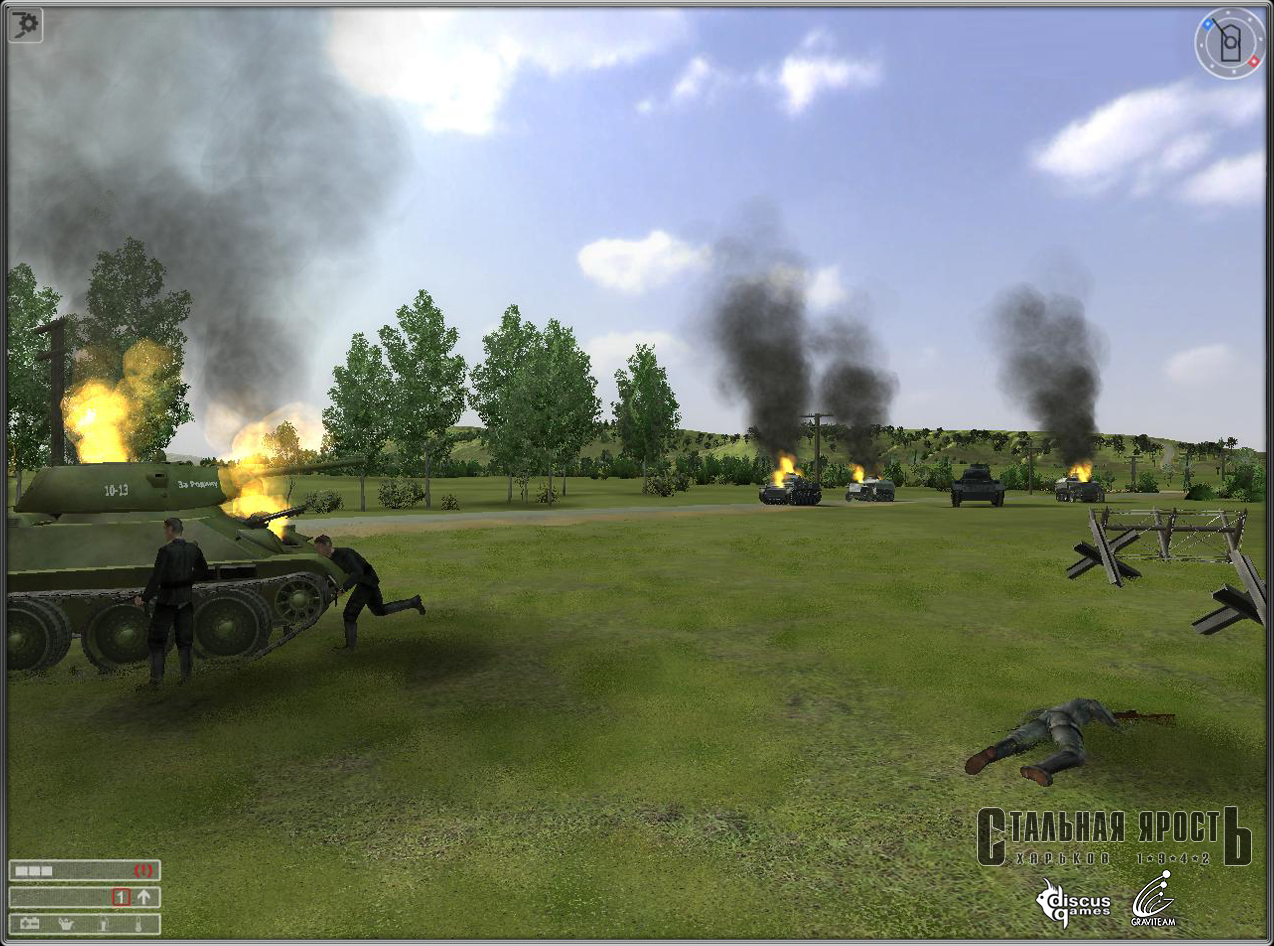

Right clicking on a unit in the 2-D map brings out a detailed roster of the unit, including morale, ammunition and other factors. So better watch out those interior lines. Also, the 2-D map only allows the reinforcement, ammunition supply and repair of vehicles/guns as far as they are not isolated by the enemy. I found it very useful to zoom in to see the terrain layout in some square I want to defend or attack, just to make sure that I don't leave an infantry platoon out in open terrain or that my tanks have an adequate road network for withdrawing or moving towards the objective. Moving units in the 2-D map is way more involved than checkers or chess with military icons. When the 3-D battle ends, the player is taken back to the 2-D map where he can ponder his next moves. Besides whacking the hell out of the enemy, every 3-D battle has terrain objectives that need to be secured in order to win that specific encounter. The player can customize how long these 3-D battles last.
STEEL FURY KHARKOV SIGHT CONTROL FULL
And after deployment a full blown 3-D, the real time (pausable) battle starts. But he is allowed to deploy his troops in the 3-D Battlefield only at areas that he controls in the 2-D map. The 3-D battlefield is seamless and the player can fly with the camera to wherever place in the whole area of operations as much as he pleases. The player is then presented with a 3-D battlefield centered in the area corresponding to the the 2-D map 1x1 Km square where the units have collided and is prompted to deploy his troops for battle. When either the player or the computer opponent move one unit into a square with enemy units, the fighting starts. The nature of the terrain at a specific square (woods, rivers, marshes and roads) has an effect on the units' movement. Different units have different "spotting ranges" (the amount of squares around them where they can detect enemy units), and movement ranges. Each unit in the 1x1 Km squares is of a strenght of roughly a platoon, but sometimes they are reinforced with other support weapons. This map is divided in 1x1 km squares on which units hop in a "IGOUGO" turn based mechanism, with each turn representing 4 hours. The player is presented first with a turn based interface featuring a 2-D topographic map of approximately 10x10 km. "Achtung Panzer: Kharkov 1943" (APK43 from now on), is a single player, tactical war game that focuses on a relatively narrow sector (Taranovka-Sokolove) of the fight between the Soviets and Germans over a southern access corridor towards Kharkov. A map detailing the units involved in the Third Battle for Kharkov and the sector you will be playing. But the full credit goes to the way the story is presented in this game. After playing "Achtung Panzer: Kharkov 1943" I can say I am still right. I always thought that I would be able to find something interesting in any combat story of any unit, of any country, at any front and at any time during WWII. That's why a while ago I was mildly surprised to read about this tactical game "Achtung Panzer: Kharkov 1943", that puts you in command of small units (company and below) in the less sexy, kind of distant southern flank of the city during March of 1943. To my defense, let me point out that even boutique war games developers who cater the most hard core and knowledgeable grognards out there are thinking it twice before meandering onto less popular WWII battles. Well, I hope you see my point that big stories about big battles are difficult to not love if you suck at military history as much as I do. A collosal struggle of men and heavy metal as any other battle in the Eastern Front, The Third Battle of Kharkov ended with the Germans capturing the city from the north and getting some morale back after the horrendous defeat and surrender of the German Sixth Army at. The Third Battle of Kharkov has been more or less in the realms of hardcore WWII history discussion and war gaming. The Eastern Front has its own share of very popular battles and operations (Stalingrad, Operation Barbarossa, Moscow and Kursk, just to mention a few).

Popular imagination has a long standing love affair with blockbuster WWII battles and operations (El Alamein, Normandy, the Bulge, Montecassino, Operation Market Garden,, etc.).


 0 kommentar(er)
0 kommentar(er)
